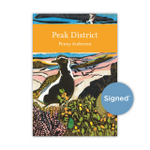By: Philippe Clabaut(Editor), Claude Augris(Editor)
80 pages, includes CD-ROM
![Les Fonds Marins Côtiers de Corse Les Fonds Marins Côtiers de Corse]()
Click to have a closer look
About this book
Contents
Customer reviews
Related titles
About this book
Language: French
The coastal seabed of Corsica has been the subject of several mapping efforts, both geological and biological. In 1994, a general mapping along its coastline was undertaken, designed primarily to establish the distribution of Posidonia meadows. The morphosedimentary part of this mapping, however, had not been addressed.
This biomorphosedimentary map covers the thousand miles of Corsican coast, divided into twenty-five sheets set to the original scale of 1:20 000, and is accompanied by an explanatory booklet. The most representative original recordings are grouped in a specific chapter.
The map, to be found on a CD-ROM at the end of booklet, highlights the close relationship between plants and nature of the substrate, rocky or loose, the influence of hydrodynamics on sediment distribution and morphology of seagrass. The scientific teams from the University of Corsica and Ifremer have collaborated to bring this synthesis within the reach of as many people who could be interested, from professionals and teachers, to planners and policy-makers.
Summary in French:
Les fonds marins côtiers de Corse ont fait l’objet de différents programmes de cartographie, autant géologiques que biologiques.
Dès 1994, une cartographie générale des peuplements et types de fonds présents le long de son littoral a été entreprise, visant essentiellement à établir la répartition des herbiers de posidonies. Le volet morphosédimentaire de cette cartographie n’avait cependant pas été abordé.
Une carte biomorphosédimentaire couvrant les mille kilomètres de côtes corses, divisée en vingt-cinq feuilles établies à l’échelle originale 1/20 000 et accompagnée d’un livret explicatif, présente les résultats.
Les enregistrements originaux les plus représentatifs sont regroupés dans un chapitre spécifique.
Cette carte, insérée dans un cédérom en fin de livret, met en évidence les relations étroites entre l’herbier et la nature du substrat, rocheux ou meuble, l’influence de l’hydrodynamisme sur la répartition des sédiments et la morphologie des herbiers.
Les équipes scientifiques de l’université de Corse et de l’Ifremer ont collaboré pour mettre à la portée du plus grand nombre cette synthèse qui devrait intéresser les professionnels, les enseignants, les aménageurs et les décideurs publics.
Contents
Introduction
Chapitre I. Caractéristiques générales du domaine marin côtier de la Corse
Cadre géologique
Nature des fonds du plateau insulaire
L’herbier de Posidonies
Régime hydrodynamique
Chapitre II. Moyens de reconnaissance et données utilisées
Chapitre III. Nature et répartition des formations superficielles
Le substratum rocheux
Les sédiments meubles
L’herbier de Posidonies
L’herbier sur les substrats meubles
L’herbier sur les substrats rocheux
Morphologies d’herbier aux embouchures de fleuves
Influence des facteurs hydrodynamiques sur la répartition de l’herbier
Les traces anthropiques
Chapitre IV. Atlas d’images acoustiques des fonds marins
Conclusion
Références bibliographiques
Customer Reviews
By: Philippe Clabaut(Editor), Claude Augris(Editor)
80 pages, includes CD-ROM
























![Les Termites dans le Monde [Termites of the World]](http://mediacdn.nhbs.com/jackets/jackets_resizer_medium/18/182815.jpg?height=150&width=85)
![Arbres, Arbustes et Lianes d'Afrique de l'Ouest [West African Trees, Shrubs and Lianas]](http://mediacdn.nhbs.com/jackets/jackets_resizer_medium/24/246252.jpg?height=150&width=100)
![Paysage, Biodiversité Fonctionnelle et Santé des Plantes [Landscape, Functional Biodiversity and Plant Health]](http://mediacdn.nhbs.com/jackets/jackets_resizer_medium/25/253537.jpg?height=150&width=100)
![Grenouilles, Crapauds & Cie: Parlez-Moi d'Anoures… [Frogs, Toads & Co.: Tell Me about Anurans...]](http://mediacdn.nhbs.com/jackets/jackets_resizer_medium/23/238491.jpg?height=150&width=131)
![Les Maladies Émergentes: Épidémiologie chez le Végétal, l'Animal et l'Homme [Emerging Diseases: Epidemiology in Plants, Animals and Humans]](http://mediacdn.nhbs.com/jackets/jackets_resizer_medium/23/237748.jpg?height=150&width=97)
![Les Orchidées Sauvages de Paris [The Wild Orchids of Paris]](http://mediacdn.nhbs.com/jackets/jackets_resizer_medium/17/179793.jpg?height=150&width=85)
![Les Invertébrés Marins du Golfe de Gascogne à la Manche Orientale: Guide d'Identification des Èspeces Recoltées dans les Chalut [Marine Invertebrates of the Bay of Biscay at the Eastern Channel: Identification Guide for Trawl-Harvested Species]](http://mediacdn.nhbs.com/jackets/jackets_resizer_medium/18/183611.jpg?height=150&width=100)

![Oiseaux et Changement Global: Menace ou Aubaine? [Bird and Global Change: Threat of Windfall?]](http://mediacdn.nhbs.com/jackets/jackets_resizer_medium/22/224993.jpg?height=150&width=132)
![Les Insectes du Monde [Insects of the World] (2-Volume Set)](http://mediacdn.nhbs.com/jackets/jackets_resizer_medium/25/255244.jpg?height=150&width=235)
![Poissons de l'Océan Indien Et de la Mer Rouge [Fishes of the Indian Ocean and Red Sea]](http://mediacdn.nhbs.com/jackets/jackets_resizer_medium/20/200808.jpg?height=150&width=94)
![Gestion Durable de la Flore Adventice des Cultures [Sustainable Management of Agricultural Weeds]](http://mediacdn.nhbs.com/jackets/jackets_resizer_medium/24/247908.jpg?height=150&width=100)